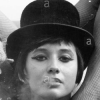Hi, I currently use mirror addressing mode when drawing texturized meshes. And it works great.
device->SetSamplerState(0, D3DSAMP_ADDRESSU, D3DTADDRESS_MIRROR);
device->SetSamplerState(0, D3DSAMP_ADDRESSV, D3DTADDRESS_MIRROR);
However, when I try to tile sprites with the ID3DXSprite interface, I overload the RECT parameter in the Draw() method. For example, the texture is 64x64 pixels, but I want to tile it for 200x200 pixels big. But the sprite is still in Clamp addressing mode. Where do I change it to mirror or wrap?
SetRect(&texBox, 0, 0, 200, 200);
...
...
sprite->Draw(pTexture, &texBox, &Center, &Position, Color);






